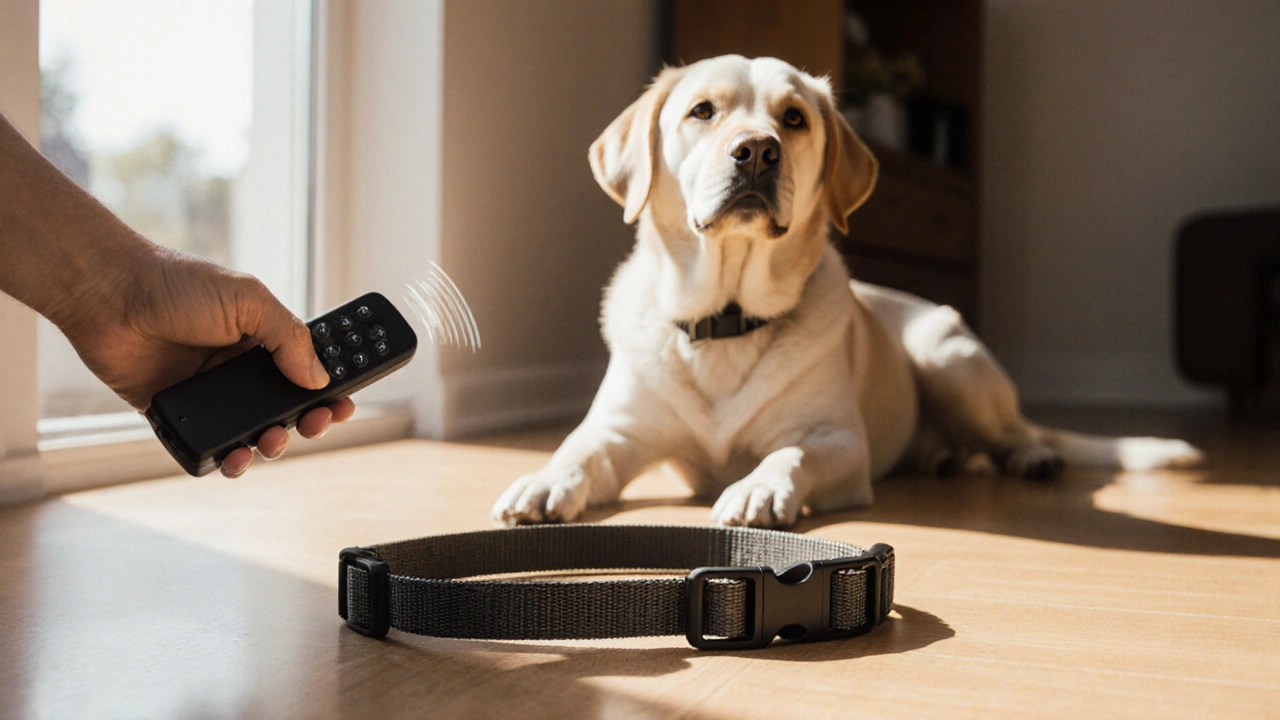Vibrating Dog Collars – How They Work and When to Use Them
When working with vibrating dog collars, battery‑powered collars that emit gentle vibrations to get a dog’s attention or guide behavior. Also known as vibration training collars, they are a type of dog training tool, equipment used to teach or correct canine behavior. Because they target dog anxiety, the stress response dogs show in uncertain situations, they play a role in pet safety, preventing risky actions like running into traffic. Most owners also consider them part of dog accessories, everyday items such as leashes, harnesses, and tags.
Vibrating dog collars encompass behavior correction tools, but they differ from shock collars in that the stimulus is non‑painful. The core idea is simple: a light buzz catches the dog’s focus without causing fear, allowing owners to redirect attention. This means the device requires a reliable remote controller; without it, the vibration can’t be timed correctly, and training loses effectiveness. Many trainers say that consistency in cue delivery influences how quickly a dog learns, so a collar’s range and battery life become key attributes. Typical features include multiple vibration intensities, waterproof construction, and adjustable strap sizes to fit breeds from a tiny terrier to a large retriever.
If you're looking for the best vibrating dog collars, start by matching the collar’s specifications to your dog’s size, activity level, and training goals. Dogs that are easily distracted benefit from a stronger setting, while older dogs might need only a gentle buzz. Check for easy‑to‑replace batteries and a clear LED indicator so you know when power runs low. Accessories like a handheld remote with ergonomic grip make outdoor sessions smoother, and a warranty signals manufacturer confidence. Remember that a collar works best when paired with positive reinforcement—reward your dog right after the vibration for the desired behavior. This combination reduces the chance of anxiety escalation and builds a stronger trust bond.
Below you’ll find a curated selection of articles that dive deeper into related topics: the science behind dog anxiety, safe use of training tools, and how to choose accessories that keep your pet comfortable. Each post offers practical steps you can apply right away, whether you’re a first‑time owner or a seasoned trainer. Let’s explore the resources and get your pup on the path to happier, safer outings.
Posted By Bryndle Redding On 25 Oct 2025 Comments (0)
Do Vibrating Dog Collars Actually Work? Pros, Cons & Science Explained
Explore whether vibrating dog collars actually work, backed by research, pros and cons, safety tips, and a guide to choosing the right one for your pet.
READ MORE